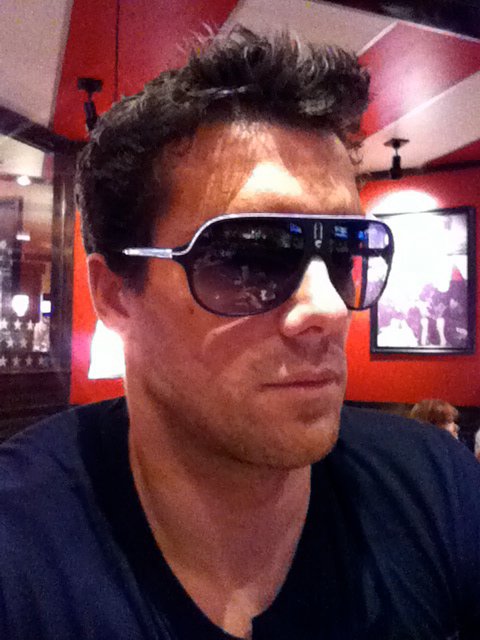|
Brille
The brille (also called the ocular scale, eye cap or spectacle) is the layer of transparent, immovable disc-shaped skin or scale covering the eyes of some animals for protection, especially in animals without eyelids. In squamate reptiles both the nictitating membrane and the eyelids have been suggested as the evolutionary origin of the brille, but embryonic studies supports the fusion of the dorsal and ventral eyelids. Brille means "spectacles" or " glasses" in German, Norwegian, and Danish. In snakes, there are no eyelids and the brille is clear and cannot be distinguished, except when the animal is becoming ready for ecdysis. At that time, it becomes cloudy and is visible as a cover over the eye. When the snake moults, the brille is also shed, generally inside out, as part of its skin. The brilles protect their eyes from dust and dirt and give them a "glassy-eyed" blank appearance. Snakes, flap-footed lizards, night lizards, and some skinks have brilles. All geckos except ... [...More Info...] [...Related Items...] OR: [Wikipedia] [Google] [Baidu] |
Glasses
Glasses, also known as eyeglasses (American English), spectacles (Commonwealth English), or colloquially as specs, are vision eyewear with clear or tinted lenses mounted in a frame that holds them in front of a person's eyes, typically utilizing a bridge over the nose and hinged arms, known as temples or temple pieces, that rest over the ears for support. Glasses are typically used for vision correction, such as with reading glasses and glasses used for nearsightedness; however, without the specialized lenses, they are sometimes used for cosmetic purposes. Safety glasses are eye protection, a form of personal protective equipment ( PPE) that are worn by workers around their eyes for protection. Safety glasses act as a shield to protect the eyes from any type of foreign debris that may cause irritation or injury; these glasses may have protection on the sides of the eyes as well as in the lenses. Some types of safety glasses are used to protect against visible and n ... [...More Info...] [...Related Items...] OR: [Wikipedia] [Google] [Baidu] |
Snake Scales
Snakes, like other reptiles, have skin covered in scales.Boulenger, George A. 1890 The Fauna of British India. p. 1 Snakes are entirely covered with scales or scutes of various shapes and sizes, known as snakeskin as a whole. A scale protects the body of the snake, aids it in locomotion, allows moisture to be retained within, alters the surface characteristics such as roughness to aid in camouflage, and in some cases even aids in prey capture (such as '' Acrochordus''). The simple or complex colouration patterns (which help in camouflage and anti-predator display) are a property of the underlying skin, but the folded nature of scaled skin allows bright skin to be concealed between scales then revealed in order to startle predators. Scales have been modified over time to serve other functions such as " eyelash" fringes, and protective covers for the eyes [...More Info...] [...Related Items...] OR: [Wikipedia] [Google] [Baidu] |
AB124 Brille
AB1 ''(formally AB Channel 1 until 1995)'' is a French television channel aimed at young adults. History AB1 launched on Eutelsat's Hot Bird satellite and on cable on December 1, 1995 as AB Channel 1 nearly a year before the launch of the AB Sat digital satellite package as that package's premium mini-generalist channel. The first line-up is made up of sitcoms, series and animes from Club Dorothée, of which AB Groupe is a producer. In 1997, the word Channel disappears and the channel takes its current name AB1, including a change of look. In its early days, the channel broadcast American series (new to France) in their original version such as Caroline in the City and Malcolm & Eddie. Among the channel's innovations, it offered a window for African-American sitcoms such as Malcolm & Eddie or the Steve Harvey Show and aired certain seasons of the American talk show, The Jerry Springer Show. In 2000, the channel set up new French programs produced by AB Productions and leav ... [...More Info...] [...Related Items...] OR: [Wikipedia] [Google] [Baidu] |
Nictitating Membrane
The nictitating membrane (from Latin '' nictare'', to blink) is a transparent or translucent third eyelid present in some animals that can be drawn across the eye from the medial canthus to protect and moisten it while maintaining vision. Most Anura (tailless amphibians), some reptiles, birds, and sharks, and some mammals (such as cats, beavers, polar bears, seals and aardvarks) have full nictitating membranes; in many other mammals, a small, vestigial portion of the nictitating membrane remains in the corner of the eye. It is often informally called a third eyelid or haw; the scientific terms for it are the ''plica semilunaris'', ''membrana nictitans'', or ''palpebra tertia''. Description The nictitating membrane is a transparent or translucent third eyelid present in some animals that can be drawn across the eye for protection and to moisten it while maintaining vision. The term comes from the Latin word '' nictare'', meaning "to blink". It is often called a ''thi ... [...More Info...] [...Related Items...] OR: [Wikipedia] [Google] [Baidu] |
Ecdysis
Ecdysis is the moulting of the cuticle in many invertebrates of the clade Ecdysozoa. Since the cuticle of these animals typically forms a largely inelastic exoskeleton, it is shed during growth and a new, larger covering is formed. The remnants of the old, empty exoskeleton are called exuviae. After moulting, an arthropod is described as ''teneral'', a ''callow''; it is "fresh", pale and soft-bodied. Within one or two hours, the cuticle hardens and darkens following a Tanning (leather), tanning process analogous to the production of leather. During this short phase the animal expands, since growth is otherwise constrained by the rigidity of the exoskeleton. Growth of the limbs and other parts normally covered by the hard exoskeleton is achieved by transfer of body fluids from soft parts before the new skin hardens. A spider with a small abdomen may be undernourished but more probably has recently undergone ecdysis. Some arthropods, especially large insects with tracheal respira ... [...More Info...] [...Related Items...] OR: [Wikipedia] [Google] [Baidu] |
Snake
Snakes are elongated limbless reptiles of the suborder Serpentes (). Cladistically squamates, snakes are ectothermic, amniote vertebrates covered in overlapping scales much like other members of the group. Many species of snakes have skulls with several more joints than their lizard ancestors and relatives, enabling them to swallow prey much larger than their heads ( cranial kinesis). To accommodate their narrow bodies, snakes' paired organs (such as kidneys) appear one in front of the other instead of side by side, and most only have one functional lung. Some species retain a pelvic girdle with a pair of vestigial claws on either side of the cloaca. Lizards have independently evolved elongate bodies without limbs or with greatly reduced limbs at least twenty-five times via convergent evolution, leading to many lineages of legless lizards. These resemble snakes, but several common groups of legless lizards have eyelids and external ears, which snakes lack, althoug ... [...More Info...] [...Related Items...] OR: [Wikipedia] [Google] [Baidu] |
Flap-footed Lizard
Pygopodidae, commonly known as snake-lizards, or flap-footed lizards, are a family of legless lizards with reduced or absent limbs, and are a type of gecko. The 47 species are placed in two subfamilies and eight genera. They have unusually long, slender bodies, giving them a strong resemblance to snakes. Like snakes and most geckos, they have no eyelids, but unlike snakes, they have external ear holes and flat, unforked tongues. They are native to Australia and New Guinea. Pygopodids have no fore limbs at all, but they do possess vestigial hind limbs in the form of small, flattened flaps. These may have some role in courtship and defensive behaviour, and may even aid in locomotion through vegetation. Some species are insectivorous burrowing animals, but others are adapted to moving through dense spinifex or other vegetation. Shared gecko characteristics The pygopodids and other geckos share a number of characteristics: * the production of parchment-shelled eggs in clutch sizes ... [...More Info...] [...Related Items...] OR: [Wikipedia] [Google] [Baidu] |
Night Lizard
Night lizards (family Xantusiidae) are a group of small scincomorph lizards, averaging from less than to over snout–vent length. Most species are viviparous (live-bearing), with the exception of those in the genus '' Cricosaura''. The family has only three living genera, with approximately 34 living species. The genera are divided by geographic range: ''Xantusia'' in southwestern North America and Baja California, '' Cricosaura'' in Cuba, and '' Lepidophyma'', the most populous night lizard genus, in Central America. Three fossil genera are also known: '' Catactegenys'', '' Palepidophyma'', '' Palaeoxantusia''. Biology Night lizards were originally thought to be nocturnal because of their secretive lifestyle, but they are at least in some cases diurnal. Night lizards have evolved to live in very narrow environmental niches—"microhabitat specialization"—such as rock crevices or damp logs, and may spend their entire life under the same cover. Physically, night lizards ar ... [...More Info...] [...Related Items...] OR: [Wikipedia] [Google] [Baidu] |
Skink
Skinks are a type of lizard belonging to the family (biology), family Scincidae, a family in the Taxonomic rank, infraorder Scincomorpha. With more than 1,500 described species across 100 different taxonomic genera, the family Scincidae is one of the most diverse families of lizards. Skinks are characterized by their smaller legs in comparison to typical lizards and are found in different habitats except arctic and subarctic regions. Etymology The word ''skink'', which entered the English language around 1580–1590, comes from classical Greek and Latin , names that referred to various specific lizards. Description Skinks look like lizards of the family Lacertidae (sometimes called ''true lizards''), but most species of skinks have no pronounced neck and relatively small legs. Several genera (e.g., ''Typhlosaurus'') have no limbs at all. This is not true for all skinks, however, as some species such as the Tribolonotus gracilis, red-eyed crocodile skink have a head that is ve ... [...More Info...] [...Related Items...] OR: [Wikipedia] [Google] [Baidu] |
Gecko
Geckos are small, mostly carnivorous lizards that have a wide distribution, found on every continent except Antarctica. Belonging to the infraorder Gekkota, geckos are found in warm climates. They range from . Geckos are unique among lizards for their vocalisations, which differ from species to species. Most geckos in the family Gekkonidae use chirping or clicking sounds in their social interactions. Tokay geckos (''Gekko gecko'') are known for their loud mating calls, and some other species are capable of making hissing noises when alarmed or threatened. They are the most species-rich group of lizards, with about 1,500 different species worldwide. All geckos, except species in the family Eublepharidae lack eyelids; instead, the outer surface of the eyeball has a transparent membrane, the brille. They have a fixed lens within each iris that enlarges in darkness to let in more light. Since they cannot blink, species without eyelids generally lick their own brilles whe ... [...More Info...] [...Related Items...] OR: [Wikipedia] [Google] [Baidu] |






